Last week, I talked about just what stress actually is. This week, you're going to learn about what stress does to our muscles, tendons, joints, and nerves. I'll list the three most common painful conditions that are caused by stress and provide some information on what you can do about it if you're suffering with those conditions.
First, there's a little bit of background you need to have. Many of us have probably heard about our fight, flight, freeze system. Our nervous system is broken down into three categories.
The autonomic nervous system is the part that is most affected by stress. This system is broken down into two parts, the sympathetic nervous system and the parasympathetic nervous system.
The sympathetic nervous system is what is normally referred to as our fight or flight system and the parasympathetic nervous system is often referred to as the rest and digest system.
The sympathetic and parasympathetic systems are both always online in your body. However, if you're walking through the woods and a bear jumps out and starts chasing you, your parasympathetic nervous system will dial way down in function, and your sympathetic nervous system will turn way up. The sympathetic nervous system is meant to protect us from danger. However that system is meant to only be on full blast for short periods of time.

Normally, if that bear jumps out in the woods, the sympathetic nervous system shoots up to overdrive, pumps more blood to your muscles so you can run faster, and usually within 5 to 10 minutes - it's over, one way or the other. You either got away from the bear or you didn't, but either way, the system then is meant to go back to normal.
But we sit in traffic stressed to the max for hours at a time.
And during that time our sympathetic nervous system is running continuously.
That's where the problems occur.
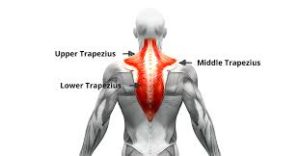
Our bodies can function pretty well with increased activation to those muscles for a short period of time. But if it continues day after day in our stressful lives, then it starts to cause problems. It starts to cause pain and tension on both sides of the neck, it can cause shoulder problems due to the fact that this raises the shoulder from its normal resting position and makes it more vulnerable, and it can cause pain in between the shoulder blades from the tension of all those muscles.
2. The second most common musculoskeletal consequence of increased stress is pain in the jaw. It is very common that when people are under stress, they will clench their jaw as a compensatory strategy. This constant tension can create pain in the muscles surrounding the jaw as well as pain in the jaw joint itself.
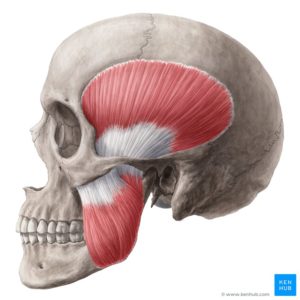
But clenching the jaw is not only a problem for the jaw itself. The way that the muscles in our head and neck work, when you clench your jaw, you clench your neck. So not only does teeth/jaw clenching lead to pain in the jaw, but it can also lead to neck pain as well as headaches. The type of headaches that it causes are referred to as tension headaches. These headaches are felt at the base of your skull and around the sides of your head.

3. The third most common musculoskeletal issue caused by stress is low back pain. The jaw is not the only area that people clench when they are stressed. There are two other areas that are very common for people to clench during times of stress. These are the abdominal muscles and the gluteal muscles.

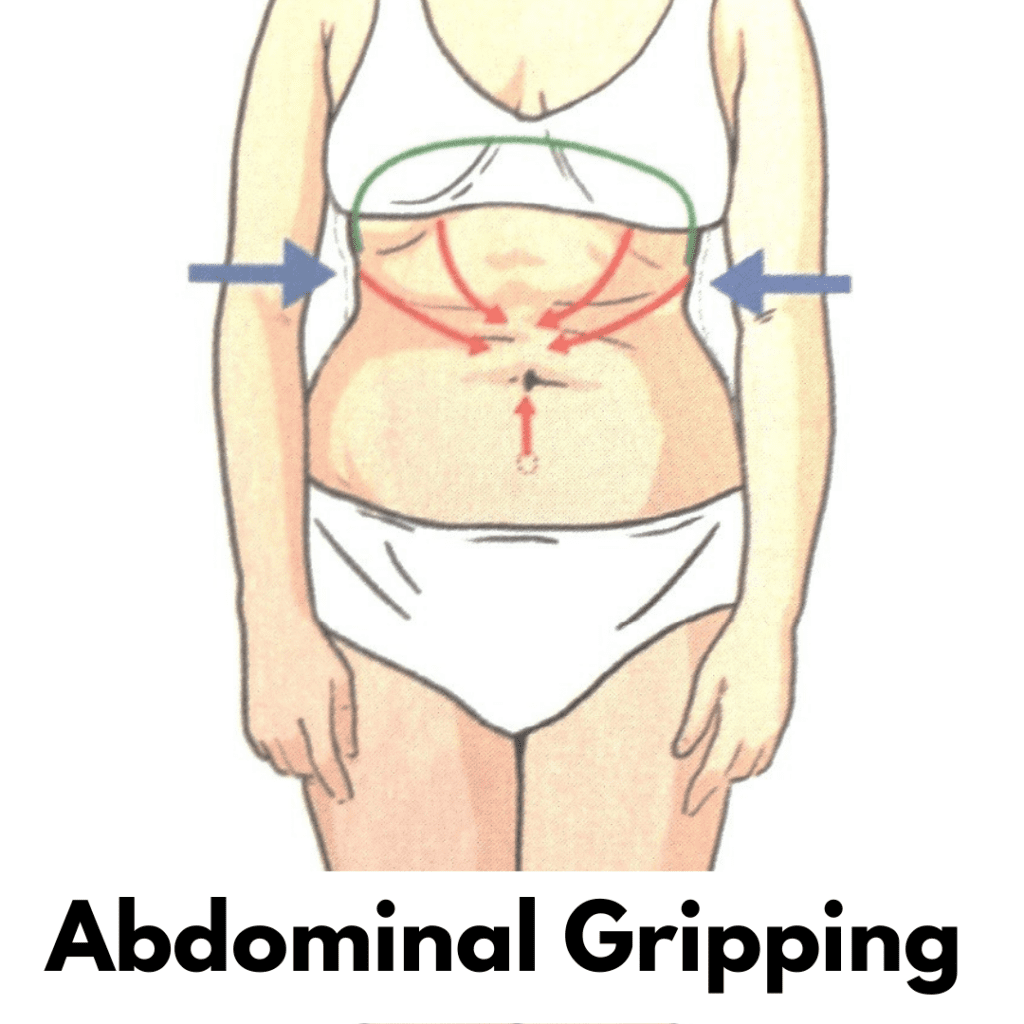
Excessive clenching in either of those two areas is known to lead to low back pain. There is a phenomenon in the body called irradiation. This phenomenon basically means that tension breeds tension. An example of this is if you were trying to lift something heavy with your right arm, and it was difficult, you might clench your left fist really tightly in order to build more strength in your right arm. So basically, creating tension in a nearby area increases the tension in that secondary area.
Increased tension in the abdominal muscles leads to increased tension in the low back muscles which will lead to pain. The same thing happens in the gluteal muscles. Our muscles are meant to work all together. When one group becomes dominant and overactive, this causes tension to increase all around that area.
If you're reading this and you are thinking that you can really relate to those three areas that I talked about above, you're probably wondering, "Well, what can I do about it.?"
There are two main things that need to be done for these problems to improve. The first is: you need to develop strategies for managing stress.
None of us can avoid stress. It's just a part of life. However, that doesn't mean that we just say woe is me and do nothing. So that means, if certain times of our life become more stressful than normal, we'll want to find strategies to mitigate the stress. I will talk about some specially helpful strategies in further blogs.
In conjunction with managing your stress, you want to find ways to alleviate the tension in the areas that are bothering you. Below, I will go over great ways to reduce the tension in the three areas I talked about above.
The contract-relax stretch is shown below. This type of stretch involves activating the muscle first and then stretching it. After a muscle has been activated, it's actually more susceptible to stretch.
2. For the inner shoulder blade muscles, I recommend using a lacrosse ball or trigger point ball.
a) For this, you're just going to go stand with your back against a wall. b) Put a lacrosse ball in between your shoulder blade and your spine. c) Then you're just going to move your torso and bend your knees in order to roll the ball all the way into the muscles in between the shoulder blades.
I recommend 60 to 90 seconds on each side of the spine.
For the jaw muscles, there are two main areas that need to be worked on. These are the jaw muscles, and the upper neck muscles. As I said before, clenching can cause both jaw pain and headaches that tend to be at the base of the skull.
a) The first technique is a release of the tension in your jaw muscles. For this one you're going to take your fingers and find your cheekbones and follow your cheekbones back towards your ear. There are two main groups of job muscles that we want to release. One of them is above the cheekbones and the other one is below.
b) So first, we'll start on the ones above the cheekbones and you'll just move your fingers upwards into the area just in front of your ear. You're going to push your hands inwards like you're trying to go into your skull and then kind of drag the tissue up towards the ceiling. This pins the muscle. Then you're going to slowly open your jaw as wide as you can: this will stretch the muscle. The video below shows the release for the muscle that is above your cheekbones. You would just repeat the same technique in the muscles below your cheekbones.
The image below shows the locations of these muscles so you'll want to do multiple passes with your hands since the muscles are pretty large.
3. The last area are the muscles at the base of your skull. These are the muscles most commonly affected when we clench our teeth. And these are the muscles most commonly associated with tension type headaches.
a) To work on these muscles, you're going to want to get either two tennis balls or two lacrosse balls and you're going to tape them together like the photo below. We call this device a peanut. b) What you want to do is to find a semi-hard surface and lie down on your back. c) Take the peanut and place it just below the base of the skull. d) You don't want the balls actually pushing on the bone of the skull - you want them in the fleshy area just below.
I recommend starting off by lying on this for 4 minutes at a time. Every couple of days, increase that by a minute until you get to 8 minutes. I don't recommend lying on it for longer than 8 minutes.
For the tightness that comes from gluteal muscle tension, we want to stretch out our hip muscles. The video below shows one of the best stretches to relieve tension in these areas.
If you are an abdominal gripper and notice tension in your abs daily ,the technique shown in the video below can be extremely helpful. He uses a much larger ball, but I recommend using a lacrosse ball in the same fashion as he shows in the video.
So there you have it. That darn stress really takes a toll on our body! But now you have some tools to fight back. Try these out and stay tuned for next week when I'll talk about stress management strategies.
And if you're dealing with a lot of pain right now and don't have time to wait for some of this stuff to work on your own, be sure to give us a call at 918-300-4084 and we can help you speed up that process of getting out of pain!


We have all heard that modern life is stressful. News articles talk about stress management, the health consequences of stress, and how to cope with stress. But ... what exactly IS stress?
With the holidays upon us, I wanted to do a deep dive on stress. During the month of December, I'm going to talk about the effects stress has on our bodies, and how to manage the stress we're all under.
In this first blog I'm going to talk about what stress is, what are the different types of stress, and what's the difference between stress and anxiety.
So what exactly is stress?
Stress is any type of change that causes physical, emotional, or psychological strain. Basically stress is your body's response to anything that requires attention or action.
But stress is not always a bad thing. There's actually two different types of stress: distress and eustress.
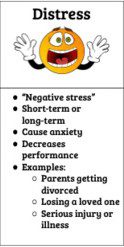
Distress is any stress that has a negative effect on us. It has the following characteristics:

Eustress is any stress that has a positive effect on us. The characteristics of eustress are:
Examples of distress would be things like the death of a loved one, losing your job, or experiencing a significant injury.
Examples of eustress would be things like getting a promotion at work, graduating from school, or winning the lottery.
One important thing to understand is that while both distress and eustress have very different effects on our mental and emotional health, they can both have detrimental effects on our bodies. They both can tax our body's reserves and produce negative physical effects. Stay tuned throughout this month and I'll go over many of the different negative physical effects of stress and what to do about them.
When you hear people talk about stress, it's common to hear them talk about anxiety as well. Those two terms are often presented as if they are the same thing. Stress and anxiety are definitely similar, but they are not the same thing.
What differentiates stress and anxiety is the source of the strain. The source of STRESS is external. This means the strain on the body is from outside. A work deadline, financial obligations, losing a loved one, these are all external factors. If the source of the strain is taken away, the strain goes away. If you complete that work project, the stress of the deadline goes away. If you come into some money, the stress of bills goes away. That is how stress works.
However, with ANXIETY, the source of the strain is internal. You can think of anxiety as what happens inside of us in response to stress. Maybe you start to worry constantly about money when you experience some financial difficulties, or perhaps a loved one dies and you start to become obsessed with the fear of your own death. These are both an internal response to stressors.
The main difference between anxiety and stress is that anxiety can remain long after the actual stressor has passed.
So there you have it. Now you know that there are actually two different types of stress. While their effects can be different, it's important to understand that they both drain the body's resources - so they can have negative effects. You also now know the difference between stress and anxiety. Mainly that stress is an external event and anxiety is how we deal with stress internally.
Stay tuned this month as I will be explaining the effects of stress on the body (You won't believe all the different ways it affects you!), and how to manage stress to reduce its harmful effects.
You are going to learn so much this month! Thanks for taking time out to educate yourself on stress/anxiety and how you can make your own life better by managing them.
Remember, this month often brings various external pressures to bear - and causes stress for a lot of us. We're here for you - we can help balance your body and alleviate some of the effects of that stress. We'd love to see you in our new location! Just give us a call at 918-300-4084

Last week I talked about how trigger points in our muscles can cause pain in other areas of the body and how this can trick us. However, muscle trigger points are not the only structures in the body that are known to cause referred pain.
Our internal organs can do the same thing. The most classic example of this is the heart. We all know that chest pain and left arm pain are signs of a heart attack. When the heart is irritated or under stress, it refers pain down the arm. This is a great example of why it's so important to see a doctor who understands referred pain.
Imagine going to the hospital with chest and left arm pain, and the doctor starts treating your left arm. If that happened to you, you're probably not going to have a very good outcome! Even though the pain is in the left arm, the only way to get the pain to go away is to treat the heart which is the source of the pain.
In this blog, I'm going to go over the three most common internal-organ referred pains that I see in patients at my clinic.
The number one most common internal-organ referred pain that I see is for kidneys. This pain referral pattern is most often seen during the formation of a kidney stone, but other problems with the kidneys can cause the same thing.

As you can see in the picture above, the kidney can cause pain in the lower back, in the outer hips, and in the front of the hips. The most common presentation is in the low back and specifically the sides of the low back. This is called flank pain.
If you are experiencing pain in these areas, there are a couple of ways to distinguish whether this is just normal back pain or if it might be coming from your kidneys. In regular low back pain, the source of the pain is usually in the muscles, ligaments, and joints of the spine.
Because of the tissues that are irritated in normal low back pain, the pain will normally fluctuate throughout the day, depending on the position of your body and your activities. So the pain might be better at certain times of the days, but get worse when you do certain activities because those tissues are being stressed.
When the pain is coming as referred pain from the kidneys, the pain is usually constant and doesn't change, no matter what you do. If you're having pain like this that is constant, your best bet is to see your primary care doctor instead of a chiropractor or physical therapist.
The second most common internal-organ pain referral that I see in my clinic is the gall bladder. This one can confuse a lot of people. The gall bladder refers pain to lots of different areas of the body and many times in the beginning stages, there's not a lot of hints that the gall bladder is actually having problems.
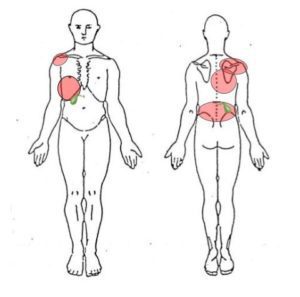
As you can see in the picture above, the gall bladder sometimes can cause pain in the lower right rib cage which is right where the gall bladder is. However, a lot of times, it is known to refer pain to the top in the back of the right shoulder, and less commonly the low back.
There are a couple of clues that you can look for to see if your pain in these areas might be coming from your gall bladder. The best clue is if you notice this pain more after you eat, especially after you eat things that are high in fat content, as this is when the gall bladder goes to work to help digest the fat. The other clue you can look for is in your stool. When the gallbladder is not functioning properly, the food that we eat will not be properly digested and absorbed, and it will come out in your stool. If you notice after you go to the bathroom that your stool is either floating on the surface of the water or sticks to the side of the bowl ,this can indicate that your body is not properly digesting fat and that the gall bladder is in trouble. These clues would tip you off that you need to see your primary care physician instead of a physical therapist or a chiropractor.
The final most common internal-organ referred pain that I see in my clinic is from the stomach and intestines. Oftentimes, our GI system doesn't present with very obvious symptoms when it's under stress. Therefore, many times the first symptoms that a patient notices is the pain referral.
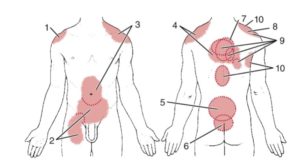
As you can see in the picture above, the stomach and intestines can refer pain to many different areas. The most common area that many people already understand is that if they feel pain in their abdomen, they most likely have something going on in their stomach or intestines.
What I see a lot in my clinic is pain in the low back being caused by the stomach or intestines. This can actually happen for multiple reasons. Sometimes the actual structures in the stomach or intestines can refer pain to the back, but another common thing that happens is when your stomach or intestines are irritated, they will actually send signals to the brain to decrease the activation in your core muscles so that the muscles do not press hard against the internal organs. This reduction in core muscle activity can also lead to low back pain.
*Note: If you are suffering from low back pain, one of the best tips that I give people to determine whether this might be coming from the stomach or intestines is simply to pay attention to the sensations in their abdomen. You should not feel your stomach and intestines during normal digestion.
Sadly, in America, many of our diets are very poor and we eat lots of inflammatory foods. So it might be very common for you to feel a burning or irritation after you eat - but this is not normal. If you are experiencing low back pain, and you commonly notice that after you eat you feel like a burning sensation or a discomfort in your belly this is a big sign that your low back pain may be coming from the stomach or intestines. Your first stop should be your primary care physician.
Unlike some of the other organs mentioned above, referred pain in your stomach and intestines may require a trip to your chiropractor or physical therapist after you've seen your primary care doctor.
If your pain was coming from the inactivity in the core muscles that I mentioned earlier, you may require some core activation exercises to help return your body to normal and decrease your low back pain.
So there you have it. Our body can be very tricky! And understanding referred pain is the best way to shorten the amount of time it takes you to get better. Like I was saying above, if you're having chest pain and left arm pain and your doctor wastes time treating your left arm first, it's going to take you longer to get better. So make sure you see a doctor who is knowledgeable on referred pain.
If you're in the Tulsa area and are experiencing pain that you think might be referred pain, give us a call at 918-300-4084. Dr. John Keefe can do a thorough exam and let you know if his care would be right for you or if you should go see your primary care doctor.

This week I did a vlog continuing in the theme of foot and ankle stability. To truly have a stable foot and ankle you must have a stable hip. The one exercise that I think gives you the most bang for your buck for hip stability is called The Hip Airplane. In this vlog, go over all the different ways to regress and progress this exercise to match your current skill level. Make sure to check it out!

I've gotten a lot of feedback and questions about the feet in the last few weeks after I published my blogs on bunions. This week I wanted to talk about why our feet are so important for our overall health and wellness.
Our feet are literally our foundation.
They are the first thing that contacts the floor once we stand up and become weight-bearing. In addition to housing and maintaining the function of the muscles and joints that exist in our feet, there are also lots of nerves in our feet. Those nerves carry information to our brain and spinal cord that informs our brains about the structures of the environment around us.
If we are walking uphill, the nerves in the feet sense the stretch in the bottom of the feet from the hill and they begin to turn on the muscles that we use to raise our leg as we walk up the hill. If we are on uneven terrain, the nerves in the feet send messages to the brain and spinal cord that activate the stabilizing muscles in our hips that help to support us on uneven surfaces.
This is part of what makes the feet so important. As they encounter the ground around us, our feet send messages that help the rest of our body prepare for the environment that we are in. This is one of the reasons for the minimalist and barefoot trend emerging over the last 5 to 10 years. Much of our common footwear these days does not allow our feet to flex and bend and splay with the changes in our terrain. That limits the information coming in from the feet and makes our ankle, hip, and core muscles less able to anticipate the needs of the body.
Tightness in the feet and ankles can also limit this information. That is why foot and ankle mobility is so important. If your foot and ankle cannot bend and twist and splay, then those messages never get to the brain and spinal cord.
So this means there are two needs that our foot and ankle have to properly get our body ready to move.
In this blog, I will discuss how to make sure your foot and ankle get good exposure to the environment.
In my next blog, I will be going over how to make sure your foot and ankle have proper mobility.
The best way to make sure that your foot is able to sense the ground and the environment around you is to make sure that your footwear allows this to occur. This is why I recommend minimalist shoes for most feet.
When Minimalist shoes first came out, cushioning was thought to be bad, no matter what. And in my opinion, this is what caused many people to dislike minimalist shoes. Let's face it: If you are a marathon runner -- you're going to need some cushion. Thankfully, now minimalist shoes come with a wide range of features.
My recommendations for good Minimalist shoes for everyday use are the New Balance Minimus line, the Merrell vapor gloves, and splay shoes. These are really good shoes for going to work, working out, or walking or hiking. The links to find these shoes are below.
If you're looking for good Minimalist shoes for endurance sports like running, trail running, or long distance walking, I recommend Altra shoes and Topos. These are great foot-shaped shoes with no build-up in the heel and with good cushioning. The links to these shoes are below.
These shoes are a great first step to getting the most out of your foundation.
Additionally - and actually very importantly: I also recommend just walking barefoot in the grass as often as you can. Wake those feet up! Your body will thank you!
And remember, you can always check with me here at Movement Laboratory about any of your foot questions ---we're here at 918.300.4084 or dr.john@movlabtulsa.com.
Be sure to watch for my next blog about ensuring MOBILITY of your feet. It's a critical issue - and there are things you can do to increase your ability to move well on your feet!


We've all heard that old song as kids: "The foot bone's connected to the ankle bone." But what we may not know is that that song is actually very true. Our feet can affect our entire body. A great example of this is a research study that found that hyper-pronation of the foot can lead to TMJ pain in the jaw.
In this blog, I'm going to cover three of the main conditions I find on a regular basis when my patients have pain in other areas of the body - but it's actually being caused by issues with their feet and ankles.
At first glance, the knee appears to be a pretty simple joint; it looks like it's a simple hinge. But looks can be deceiving. The knee not only bends like a hinge, but it also rotates inward and outward and can translate forward and backwards.
There's a saying in the healthcare world, "The knee is a slave to the hip and ankle". A great way to see this for yourself is to stand up and try to move your knee without moving your hips or ankles. It's impossible!
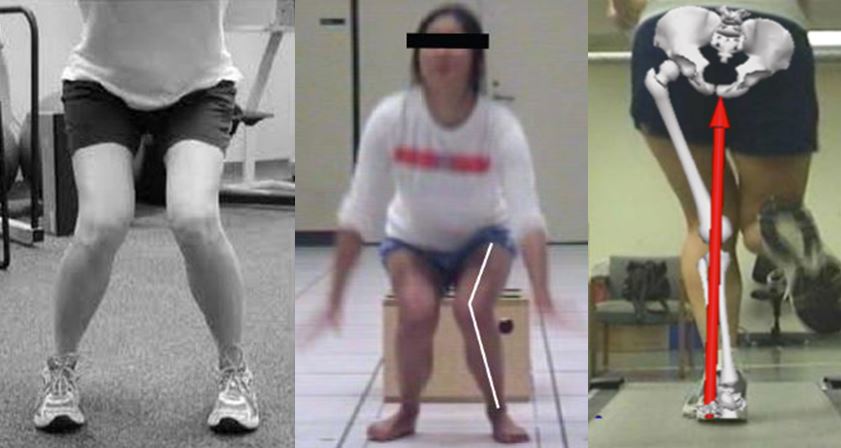
If you have an unstable foot with either too much pronation or supination, this will put your knee in a vulnerable position. An over-pronated foot will cause increased stress on your inner knee and an over- supinated foot will cause increased stress on the outer knee.
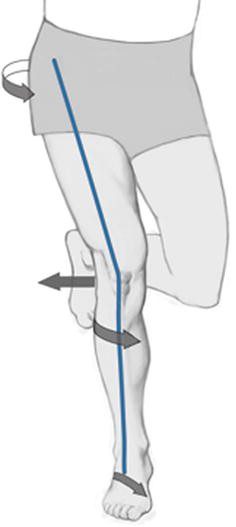
Stiffness in your foot and ankle leads to pain in the front of the knee and around the kneecap. This is one of the most common types of knee pain that I see in my practice. Pain around the kneecap is often accompanied with both stiffness in your ankle and instability in the foot, so that condition needs a proper assessment by a healthcare practitioner to facilitate the quickest healing.
The hips can also be impacted by issues in the feet. Instability in the foot and ankle can lead to pain on the outer hip and posterior hip, and can also lead to pain in the groin. Stiffness in the ankle most commonly can lead to pain in the front of the hip.
When the foot over-pronates, it causes the knee to "cave in" - this leads to increased stress in the outer hip muscles (the gluteus medius) and increased stress in the back of the hip in the piriformis muscle.
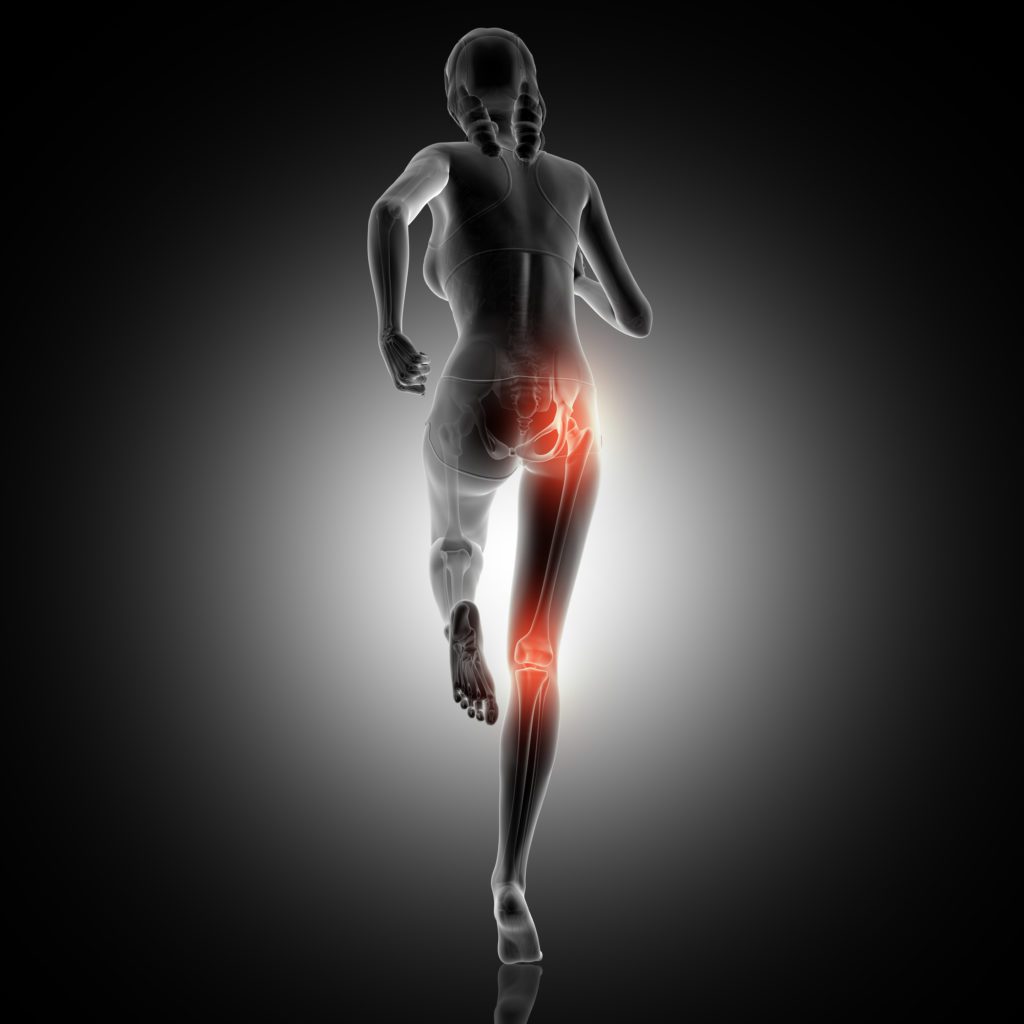
When we have a stiff ankle, it causes a change in the final stage of the gait cycle called "toe-off". When we step forward, our weight is supposed to shift forward while our ankle flexes; this allows our leg to push us forward. When the ankle is stiff, that can lead to excess force needed in our hip in order to step forward. That situation will cause pain in the anterior or posterior hip.
The feet and ankles can also be a primary component of low back pain. Anytime we utilize squatting motions, such as sitting in a chair, squatting down to pick something up, or jumping, our ankles need to bend.
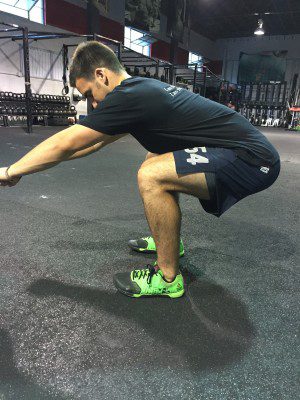
When our ankles are stiff, in order to get our hips lowered such as to allow us to sit in a chair, we have to bend our back more than is necessary to accomplish that task. So stiffness in the ankles will cause increased stress and pain in the low back.
Instability in the feet and ankles will also cause a rotation in our pelvis. When our pelvis is not able to be in a neutral position for long periods of time, this causes increased stress in the muscles and ligaments of the low back. In this case, this causes under-pronation or over-supination, either of which can also be a contributor to low back pain.
The most important thing to understand in considering how instability, over-pronation, or over-supination, and other feet/ankle conditions can affect areas like the knee, hips, low back - or even the jaw - is that we may only feel pain and discomfort in the other areas. This means we may not realize that our feet and ankles are the problem because we don't feel any pain there.
This is why it's important to see a healthcare practitioner who evaluates the entire body - not just the area that is hurting. At Movement Laboratory, every new patient gets a full-body movement assessment; no matter if the complaint they're coming in for is neck pain, knee pain, or wrist pain, or another area. It's critical to check how each area's mobility range and level affects the rest of the body.
A proper comprehensive evaluation will save a ton of time in recovery. So - if you're dealing with any of the issues listed in this blog, come see us at Movement Laboratory to get feeling better as fast as possible! Just give us a call at 918-300-4084 or you can even book online at movlab.janeapp.com.

So you're killing it in the gym! Maybe you found a great CrossFit gym, or you are weightlifiting on your own. You are consistently hitting 2-5 workout days each week. You make sure to have rest days to allow your muscles to recover. Now you're ready to start increasing your weights. But, how? Increase reps, increase sets, go heavier?! There are so many options.
I recommend letting your goals show you the way. Your goals can dictate the path that's best for you:
Most training programs involve performing the bulk of your exercises in that 8–12 rep sweet spot for a few reasons.
When trying to find your starting weight, follow this program.
Using this method, you will be able to find your ideal starting weight! This will allow you to “build a base,” perfect your form, and gain confidence for weight increases to come.
Be aware of newbie gains! When you first start strength training, you’ll likely notice a more dramatic increase in strength than you will at any other point in your strength-training journey. That’s largely because during the first couple of weeks of any strength program, the bulk of your strength gains don’t come from putting on actual muscle. Those early strength gains are due to a combination of neurological changes—basically, your brain and muscles learning to work efficiently together so that the muscle cells fire and contract with more force.
What’s more, each person has a different upper limit to how much strength their bodies can gain.
So no matter what your training experience is, knowing when you’re ready to increase weight is as simple as counting reps and watching form. If you are finishing your sets and feel like you could have done 3-4 more reps with no problem, it's probably time to start thinking about an increase.
If you are ready to increase, then your goals will again tell you how.
One important note: If you feel like you are ready to make weight increases with deadlifts and squats before you’re ready to make weight increases with triceps extensions or biceps curls, don’t worry. That’s natural. Many people tend to be stronger on lower-body exercises, at least initially. You will likely see faster weight increases with compound, multi-joint lifts such as squats, bench presses, rows, and deadlifts than with single-joint isolation ones such as leg extensions, triceps extensions, and hamstring curls.
It’s best to look at weight increases in terms of a percentage of the weight you’ve been lifting. For example, going from 5 to 10 pounds with shoulder raises might be the same jump in poundage as going from 100 to 105 pounds with deadlifts, but one requires doubling the weight while the other accounts for a 5 percent increase in weight. Generally, you should limit week-to-week weight increases for any given lift to no more than 10 percent.
Sometimes the weights available to you might mean you have to make a larger increase if you want to increase at all. In that case, always listen to your body, pay attention to your form, and cut your reps accordingly so that you can get through them all without breaking form.
In fact, it’s totally normal to start using a heavier weight and then not be able to quite hit the top of your rep scheme at first. In a few weeks, you will be able to, and then you can up your weights again. For example, if you were doing 3 sets of 12 reps of overhead presses, you may only be able to handle 3 sets of 10 reps when you bump up the weight. If you’re still in that 8–12 rep range, that’s totally fine, and in time you’ll be back to feeling like 12 reps is easy and you'll be ready to once again increase the intensity.
Lifting more weight can be awesome, but lifting too much increased weight comes with some unwelcome side effects. The big one is delayed-onset muscle soreness, or DOMS. Each time you increase the amount of stress you put on a muscle, more microscopic damage occurs within the muscle cells, leading to an uptick in pain during the 24 to 72 hours following your workout as the muscle repairs itself. However, just because DOMS hurts - that doesn’t mean it’s necessarily bad. It’s a normal part of your body recovering from the stress of lifting.
Also, beware of the dangers of our human ego. It can be tempting to get so caught up in moving more weight that you start to break down in your form. Never sacrifice form to lift more weight. This is the quickest path to injury.
So there you have it. Follow these rules to safely increase those gains:
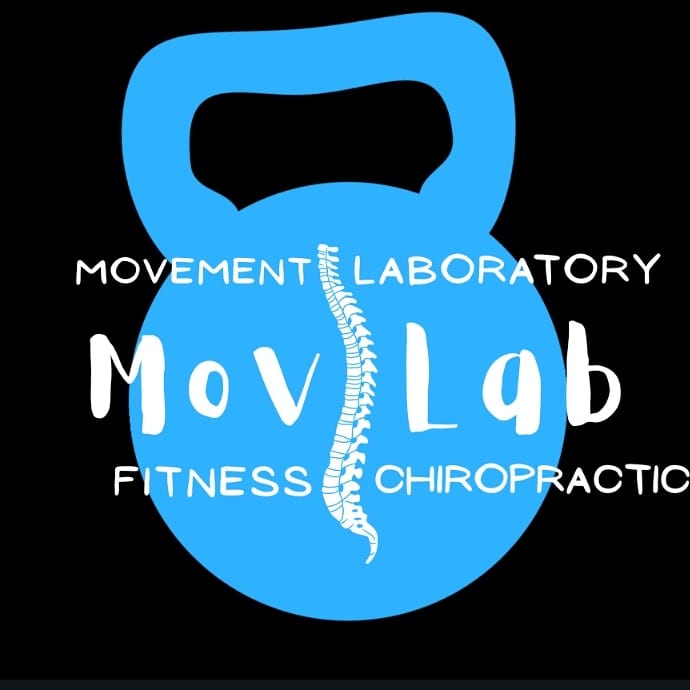
Brrrrr! This weather is crazy right now. I don't know about you guys but I've had about 5 near death experiences this last week on the ice!
Some people have not been as lucky as me!

Falling on the ice and snow is rough on the body. It's very similar to a car wreck. Even though you might land on your butt or your back, injuries may show up all over your body.
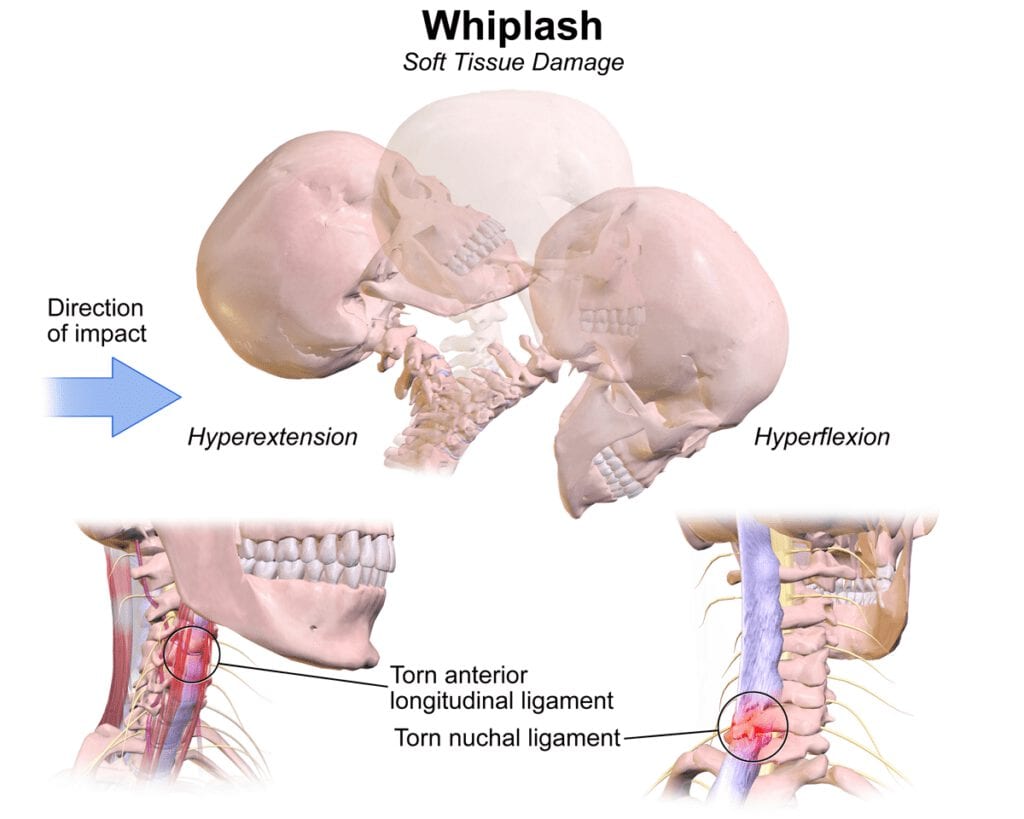
Falls, just like car wrecks, can cause whiplash. This can lead to strains and sprains in the neck and all throughout the body.
These types of injuries should not just be ignored. They can persist for years if left untreated. Here at Movement Laboratory we are experts at treating these injuries.
The first step in these injuries is calming down the pain and inflammation caused by the trauma to the muscles and joints in the fall. One of our most powerful tools for this is our Cold Laser. This therapy is amazing at decreasing inflammation and speeding up healing for the muscles and joints.
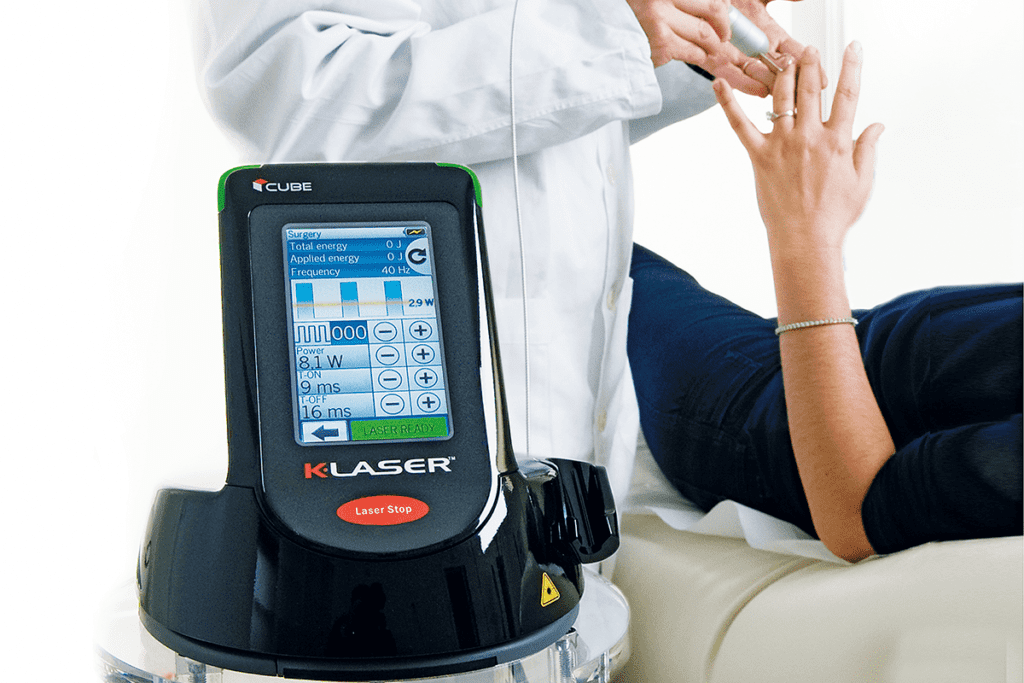
We have lots of other tools to help with reducing pain and inflammation. From acupuncture, to kinesiotape, and electronic muscle stimulation we can fight that inflammation naturally here at Movement Laboratory.
Once the pain levels decrease, we get right to work on restoring your body to regular function. After trauma our bodies get tight and stiff. We want to restore your regular movement as soon as possible.
Finally we work on strengthening your body so your less prone to injury in the future. The first part of our treatment plans is putting out the fire. In this last part, we want to now make you fireproof! Each patient gets an individually tailored exercise plan to regain their function and make them stronger than they were before!

If you've had a slip and fall in this crazy weather, don't just hope you'll feel better eventually, come see us at the Movement Laboratory and get back to feeling great!
